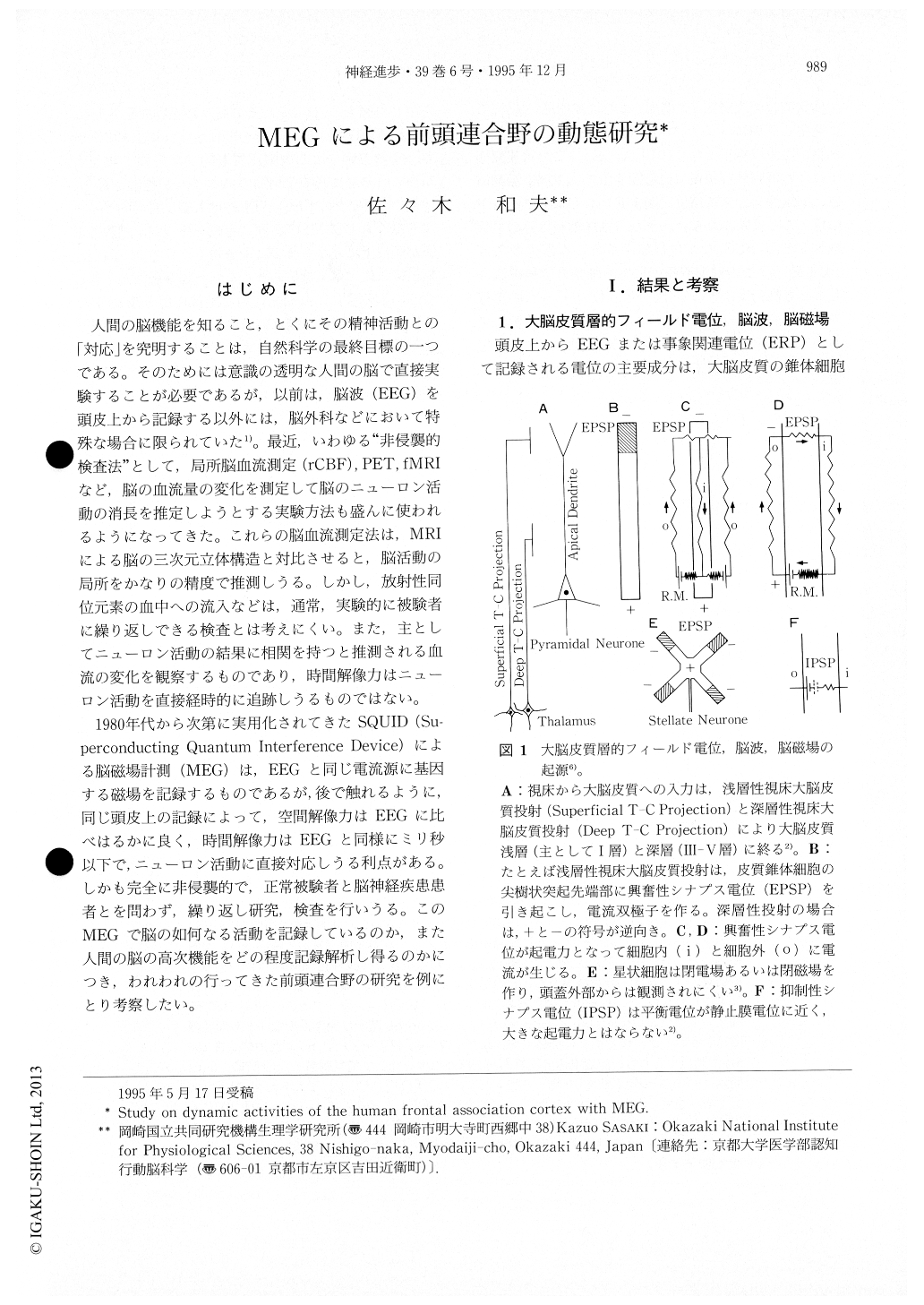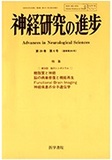Japanese
English
- 有料閲覧
- Abstract 文献概要
- 1ページ目 Look Inside
はじめに
人間の脳機能を知ること,とくにその精神活動との「対応」を究明することは,自然科学の最終目標の一つである。そのためには意識の透明な人間の脳で直接実験することが必要であるが,以前は,脳波(EEG)を頭皮上から記録する以外には,脳外科などにおいて特殊な場合に限られていた1)。最近,いわゆる“非侵襲的検査法”として,局所脳血流測定(rCBF),PET, fMRIなど,脳の血流量の変化を測定して脳のニューロン活動の消長を推定しようとする実験方法も盛んに使われるようになってきた。これらの脳血流測定法は,MRIによる脳の三次元立体構造と対比させると,脳活動の局所をかなりの精度で推測しうる。しかし,放射性同位元素の血中への流入などは,通常,実験的に被験者に繰り返しできる検査とは考えにくい。また,主としてニューロン活動の結果に相関を持つと推測される血流の変化を観察するものであり,時間解像力はニューロン活動を直接経時的に追跡しうるものではない。
Dynamic activities of the human frontal association cortex on no-go decision and subsequent suppres-sion of movement, and those on mental concentration on calculating and thinking were recorded and analyzed with multichannel SQUID gradiometers (MEG). MEG (magnetoencephalography) is consid-ered to record magnetic fields induced mainly by intracellular current flows through apical dendrites of pyramidal neurones in a relatively localized area of the cerebral cortex.

Copyright © 1995, Igaku-Shoin Ltd. All rights reserved.


